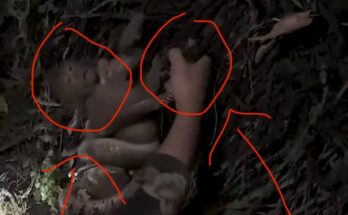
High in the canopy of India’s forests, life for langurs unfolds among swaying branches and dizzying heights. These agile primates are masters of the treetop world, leaping effortlessly from limb to limb. But for their fragile babies, one wrong move could mean disaster. That’s why the role of protection—especially against dangerous falls—is taken so seriously by every member of the troop.
A langur infant is small, vulnerable, and completely dependent on the care of adults. In the first months of life, it clings tightly to its mother’s belly, gripping her fur with tiny fingers. But as curiosity grows, so does the urge to explore. The young ones often wander away, testing their wobbly balance on thin branches or attempting little jumps between gaps. To us, it may look adorable, but in the treetops, a fall could be fatal.
This is where the incredible vigilance of langur mothers—and even other troop members—comes into play. Whenever a baby edges too far toward a risky spot, an adult is never far behind. They move quickly but gently, pulling the youngster back or positioning themselves beneath it like a safety net.
In some cases, older siblings or young females act as babysitters, keeping a watchful eye on the infants while the mother forages for food. These “nannies” are quick to scoop up a baby if it slips, wrapping their arms around the little one in a protective embrace. The moment the danger has passed, they often groom and comfort the baby, soothing any fright it may have felt.
Falls aren’t the only danger. Strong winds, sudden fights within the troop, or even the movement of predators on the forest floor can cause babies to lose their footing. Langurs seem to instinctively anticipate these risks, adjusting their movements to shield their young from harm. If a branch sways too violently, a mother might leap to a sturdier perch, keeping the baby pressed tightly to her chest until the danger passes.
What makes this behavior even more remarkable is the cooperation within the troop. Protecting the young is not solely the responsibility of the biological mother—it is a shared duty. This communal care strengthens the bonds between troop members, ensuring that every baby has multiple guardians.
The forest is a place of beauty, but it is also filled with hazards. For langur infants, survival depends on the watchful eyes, quick reflexes, and gentle hands of their protectors. Whether it’s a mother’s firm grip, a sibling’s quick save, or a babysitter’s careful watch, these acts of protection ensure the next generation grows strong and confident.
In the high canopy, where danger is always just a slip away, the langurs’ role as guardians is more than instinct—it’s an unspoken promise to keep the youngest members safe, no matter what.


